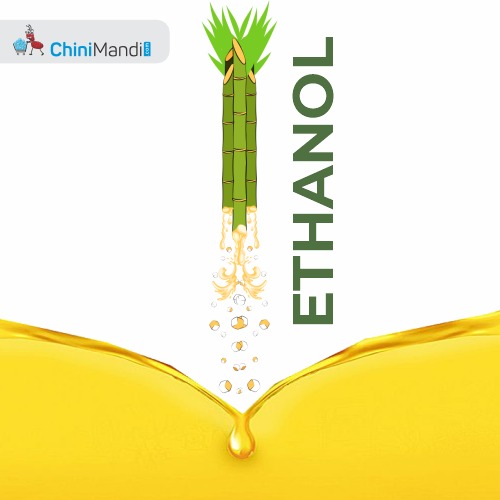As the world commits to tripling renewable energy by 2030, India may face the challenge to achieve its ethanol blending target of 20% by 2025 clashing with a looming sugar crisis and falling sugarcane output. With the efforts of Government, ethanol programme of India is growing by leaps and bounds. While EBP has soared from 1.6% in 2013-14 to 11.8% in 2022-23, the road ahead is tough.
Sugarcane vs. corn: A fine balance of fuel and food
Traditionally, sugarcane dominates ethanol production, with Brazil leading the way. Unlike its competitor, corn, sugarcane reduces the food-fuel trade-off by using molasses, a byproduct. However, recent low sugar supplies and environmental issues related to sugarcane farming have nudged India towards a possible switch – corn.
While this switch offers a strong maize-feed network for ethanol, will it mirror the warning story of the US corn boom? High crude oil prices during the 2000s sparked a corn-based ethanol explosion, but its direct rivalry with food and livestock feed triggered a domino effect. Corn prices skyrocketed, pulling wheat and barley along with them.
India’s tightrope walk: Balancing growth with grain
This dilemma forces India to walk a tightrope, balancing its clean energy aspirations with the potential disruption of food prices. While sugarcane has environmental advantages, its current constraints make corn a tempting, but will it be a feasible option?
Ethanol in India is usually produced from sugarcane derivatives, grains like rice released by the Food Corporation of India (FCI), broken rice from the open market, and corn.
Navigating the corn: Future visions
India’s recent prohibition on cane juice for ethanol production, aiming to tackle the sugar shortage, illustrates the dynamic dance between fuel and food security. However, shifting to grain-based ethanol requires careful planning.
Reversing the ban: A flexible approach
In a U-turn, the government on December 15, 2023, reversed its decision to ban the use of sugarcane juice for making ethanol as it allowed utilisation of the juice as well as B-heavy molasses to produce the green fuel but capped the diversion of sugar at 17 lakh tonnes. For now, the capping will be in place for the 2023-24 supply year that ends in October next year.
The decision to allow sugar mills to use both cane juice and B-heavy molasses for ethanol production comes in response to industry representations seeking a review of the December 7 order. This earlier order had banned the immediate use of cane juice and sugar syrup for ethanol production.
The government said it would work on the modalities to decide on the proportion of cane juice and B-heavy molasses to be used for making ethanol.
The government’s move came amid concerns over low sugar stocks and drought in Maharashtra and Karnataka, which are major sugarcane producing states. The government also expressed confidence that the target of 15% blending of ethanol with petrol would be achieved in the 2023-24 supply year.
The use of cane juice and B-heavy molasses for ethanol production has environmental and economic benefits, as it reduces the food-fuel trade-off and enhances the value addition of sugarcane. However, it also poses challenges for balancing the demand and supply of sugar and ethanol, as well as ensuring food security and price stability.
Charting a sustainable course:
Land optimization: Regulating water-intensive sugarcane farming while exploring diverse feedstocks like sorghum or even cellulosic biofuels can reduce environmental and food security concerns.
Market vigilance: Implementing solid price floors and buffers can protect food prices from crude oil variations.
Technological leaps: Embracing innovation, like enzymatic hydrolysis for cellulosic ethanol, can unlock new sustainable feedstocks and improve resource efficiency.
Collaborative spirit: Fostering research collaboration, incentivizing eco-friendly practices, and building international partnerships can pave the way for a resilient and sustainable ethanol future.
India’s clean energy journey cannot come at the expense of empty plates
Balancing its green ambitions with food security requires a nuanced approach. By embracing diverse feedstocks, technological advancements, and robust market mechanisms, India can navigate this ethanol challenge and chart a sustainable course towards a cleaner future without compromising the well-being of its people.
Disclaimer: The views and opinions expressed in the article by Dilip Patil, Managing Director of Samarth SSK Ltd., are solely his own.
















